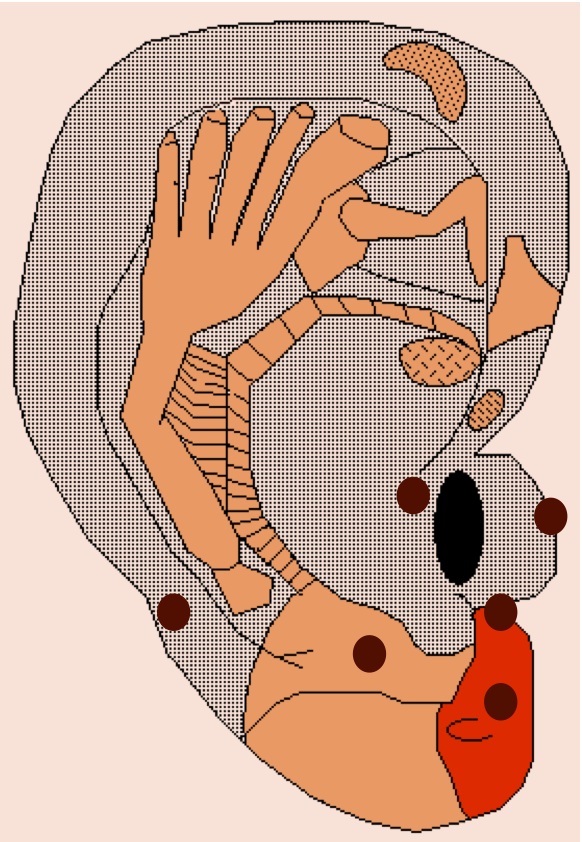The Anti-Inflammatory Actions of Auricular Point Acupressure for Chronic Low Back Pain
The Anti-Inflammatory Actions of Auricular Point Acupressure for Chronic Low Back Pain
http://www.ncbi.nlm.nih.gov/pmc/articles/PMC4480805/
Wei-Chun Lin, 1 Chao Hsing Yeh, 1 , * Lung-Chang Chien, 2 Natalia E. Morone, 3 Ronald M. Glick, 4 and Kathryn M. Albers 5
Author information ► Article notes ► Copyright and License information ►
Go to :
Abstract
Background. Auricular point acupressure (APA) is a promising treatment for pain management. Few studies have investigated the physiological mechanisms of APA analgesics. Method. In this pilot randomized clinical trial (RCT), a 4-week APA treatment was used to manage chronic low back pain (CLBP). Sixty-one participants were randomized into a real APA group (n = 32) or a sham APA group (n = 29). Blood samples, pain intensity, and physical function were collected at baseline and after 4 weeks of treatment. Results. Subjects in the real APA group reported a 56% reduction of pain intensity and a 26% improvement in physical function. Serum blood samples showed (1) a decrease in IL-1β, IL-2, IL-6, and calcitonin gene-related peptide [CGRP] and (2) an increase in IL-4. In contrast, subjects in the sham APA group (1) reported a 9% reduction in pain and a 2% improvement in physical function and (2) exhibited minimal changes of inflammatory cytokines and neuropeptides. Statistically significant differences in IL-4 and CGRP expression between the real and sham APA groups were verified. Conclusion. These findings suggest that APA treatment affects pain intensity through modulation of the immune system, as reflected by APA-induced changes in serum inflammatory cytokine and neuropeptide levels.
2.1. Auricular Point Acupressure Treatment Protocol
The APA intervention included one treatment per week for 4 consecutive weeks. Auricular points on the ears of participants were detected with an electrical acupoint finder, which measures auricular cutaneous resistance to identify the potential acupoints for treatment. Using TCM and Chinese ear acupoint maps, the acupoints selected for the real APA group included three for alleviating stress and pain (i.e., shenmen, sympathetic point, and nervous subcortex) and one corresponding to the anatomical site (i.e., lower back) [8]. The acupoints selected for the sham APA group were located away from the site where the participant was experiencing pain and included stomach, mouth, duodenum, and kidney. In our published APA protocol [12, 14], participants were told to press/stimulate the seeds taped to the acupoints on their ears at least 3 times per day for 3 minutes each time. The seeds and tape were removed at the end of the 5th day each week to insure baseline sensitivity to the site prior to the next treatment. The primary endpoint was the measure of pain intensity and physical function after completion of the 4-week APA. Participants in the sham APA group, who were blinded to this assignment, were provided the opportunity to receive real APA treatment after completing all assessments.
 Points d’auriculothérapie / Auriculotherapy Points
Cartographie synthétique et évolutive
Points d’auriculothérapie / Auriculotherapy Points
Cartographie synthétique et évolutive
